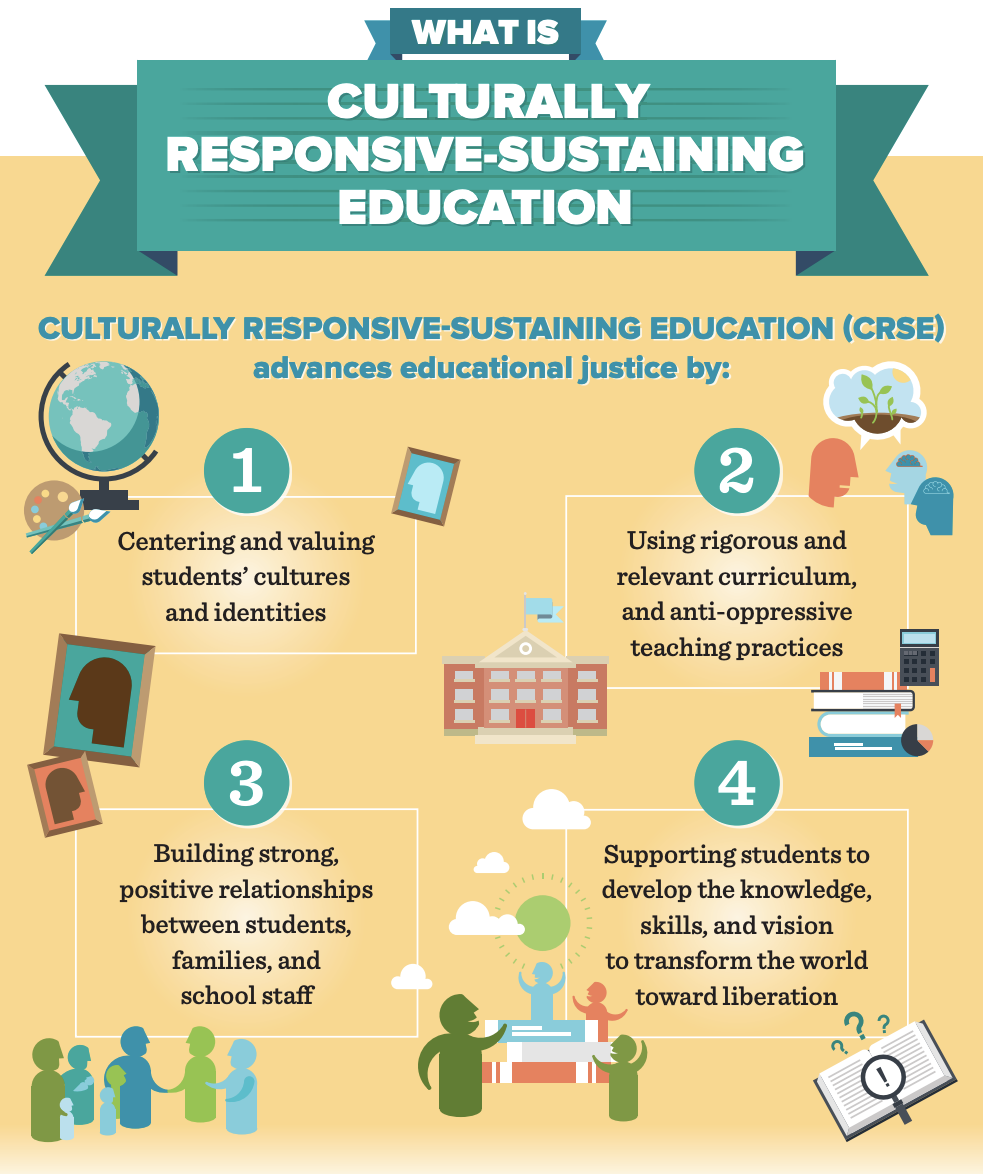March 12th, 2021
This week's assignment was to listen to this podcast here; Culturally Responsive Teaching: 4 Misconceptions. I had never learned about the concept of “culturally responsive teaching” before this week, and so Gonzalez’s episode was very interesting to me. It gave me a new perspective on how to approach diverse students (and all students in general) and reiterated the importance of observing students, assessing and reflecting on what is and is not working. It's essential to overall feel in tune with the class and be sure to not leave anyone out or behind. Hammond, the guest in the podcast, stated that it is “how do we build the capacity of diverse students to have intellectual confidence and grow?” and “how do you as a teacher show up?” Through incorporating CRT in the classroom, it becomes beneficial for everyone involved; for the students who can achieve higher and for the educators who can grow more. CRT is profitable for any classroom, and will of course be very important to keep in mind when working with the West students, who come from different backgrounds, share different stories, and are all at different levels academically. This week’s podcast related back to last week’s reading in reiterating that a classroom of students are not homogenous, and that we cannot assume all students learn best from the same methods and understand concepts after the first lesson.
Out of the 4 misconceptions addressed by Gonzalez and Hammond, the second topic was most surprising to me, that Culturally-Responsive Teaching must start with addressing implicit bias. I have taken many implicit bias tests before in other courses, but usually without much prior context; I was starting with addressing implicit biases as Hammond suggested not to do. What her and Gonzalez were saying made complete sense to me, I just had never thought about it before. You first have to understand “equity by design,” understanding the origins of the issues we are discussing, how our society is built to disproportionately disadvantage certain populations, then you can understand where and why these biases develop, and how microaggressions come from this. It is important to discuss the causes before the effects to get the whole picture and have a deeper understanding of these problems.
Overall, my takeaway from this week can be summarized by this; you only know what you are exposed to, and so our experiences heavily influence our cultural biases. If we are only exposed to individuals who look, think, and talk like us, our lens of the world is very narrow and naive. Reflecting on how and why we think the way we do about others can allow for us to uncover our own implicit biases. We make snap judgements when meeting new people, and so searching within and analyzing why we view and stereotype people the way we do can allow for us to begin to deconstruct these biases and be more accepting and non-assuming of/towards others. This is essential for us to becoming for empathetic individuals and better citizens.

Comments
Post a Comment